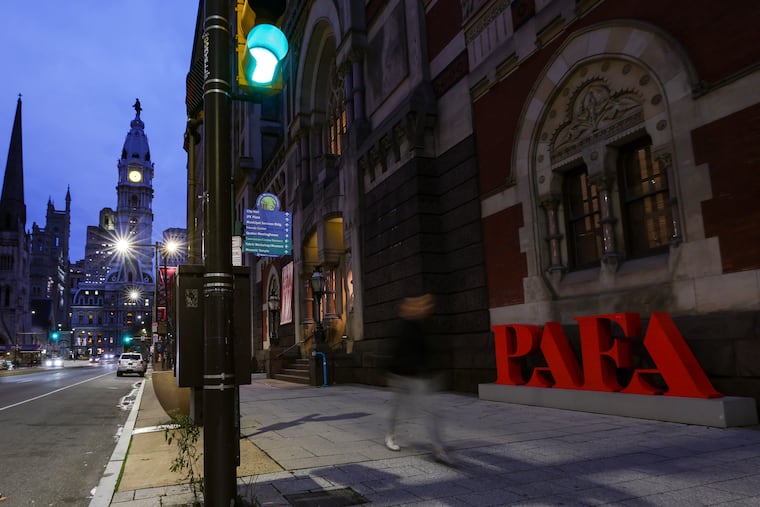PAFA ending its degree programs is a slap in the face of the art world
We must not allow Philadelphia to lose this local and national treasure.

On Jan. 10, the day before the spring semester began, the Pennsylvania Academy of the Fine Arts, where I am a fourth-year student, announced the discontinuation of its Bachelor of Fine Arts and Master of Fine Arts programs. This was a decision that shocked the faculty and my fellow students alike. It was also entirely unnecessary.
In an email sent to the campus community, the board of trustees insisted that it made every effort to save the degree programs. This is a bold claim, and one that no one in leadership, including academy president Eric Pryor himself, has been able to back up in meetings held with the student body.
Make no mistake, this wasn’t something that was unavoidable. The board of trustees was not a mere bystander to the inevitable death of the academy. The board has touted the attempted merger with Drexel University as an effort made to save the institution. Yet I believe that was done to clean its hands of this entire, centuries-old fine arts educational institution, to hand it off with minimal mess and be done with it.
Just about everyone knows that higher education is headed toward “an enrollment cliff,” where the number of students applying to colleges is expected to drop dramatically in the next year or so. My theory: Rather than deal with the hassle of increasing enrollment, the academy’s leadership would rather let the school wither in favor of a model that they believe will net them more profit.
The board of trustees assures everyone that the certificate program will be reinstated and that the academy will continue its fine arts education. However, on Jan. 10, I asked the administrator present at the first student meeting regarding this decision — a meeting at which none of the board’s members nor Pryor appeared — how a program that, despite its many values, is ineligible for federal loans and grants (and costs $43,000 a year) can be a feasible alternative in this current economic climate? No answer could be given, other than a “five-year marketing plan.”
From what students, faculty, and the Pennsylvania Academy of the Fine Arts community have seen, the marketing has been abhorrent for decades. When asked in a meeting with students if any fundraising efforts were made to save the programs, the administration’s answer was simple: It had done the annual student exhibition and the annual Bacchanal Wine Gala and Auction, the same two fundraisers the school has been running for decades. It is unclear whether there was any outreach made to donors to cover the institution’s deficit.
Knowing firsthand the unparalleled classical fine arts education present in the BFA program, it is unimaginable to see it axed like this. The institution’s contribution to not just the Philadelphia art community but the entire American art world is one that is nationally renowned.
Much of Philadelphia’s earliest artwork and architecture was created by Pennsylvania Academy of the Fine Arts graduates, including our own City Hall, which contains over 250 pieces of sculptural architecture created by Alexander Milne Calder. Many noted artists studied at the academy, including 19th-century students Mary Cassatt and Henry Ossawa Tanner, and more recent graduates like Njideka Akunyili Crosby.
The education students receive at the Pennsylvania Academy of the Fine Arts is distinctive in the world of modern art schools. A focus on studio practice and technical training is deeply entrenched in the curriculum, creating similarities between this modern institution and traditional workshop-based models of artistic training. The relationships between students and professors become that of mentors and mentees, with professors providing students with opportunities, training, guidance, and support to ensure they are prepared for life as working artists.
The BFA program allowed students who aren’t able to take out over $100,000 in loans with no federal aid access to this incredible institution, with its traditional training and sense of community that is unparalleled.
By discontinuing the Pennsylvania Academy of the Fine Arts’ programs of higher education, the board of trustees is not only felling the country’s oldest place of arts education but also spitting in the face of the entirety of the American art world by destroying one of its most valuable resources.
We must demand complete disclosure from the academy’s administration of all steps taken within the past 10 years to ensure that this institution will continue to thrive, since the board and Pryor have apparently failed in their stewardship.
We must not allow Philadelphia to lose this local and national treasure.
Raffi Zarzatian is a printmaker and South Philadelphia native who is currently attending his fourth year at the Pennsylvania Academy of the Fine Arts.